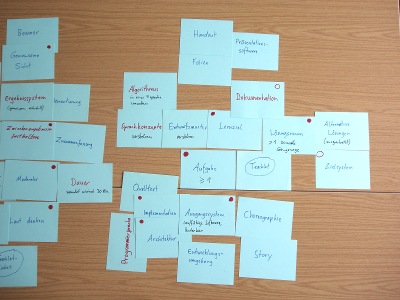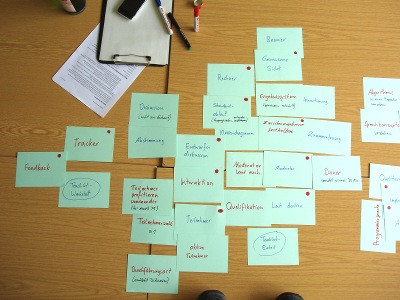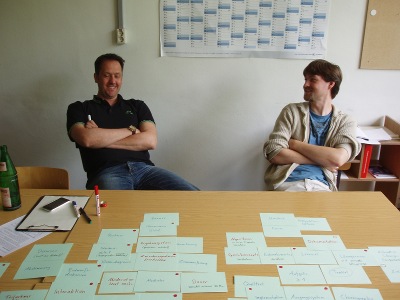Bachelor Thesis Log 3
You are reading an older blog post. Please be aware that the information contained in it may be technologically outdated. This text may not necessarily reflect my current opinions or capabilities.
This is an English translation of a blog post that was originally published in German.
August 4th, 2010
Last Thursday I spent the morning at the Informatikum tinkering with the basic framework for an updated teachlet definition with a small group of interested people. Axel, Christian, a fellow student named Daniel who was unknown to me until then, and myself were present.
We set ourselves the task to identify central aspects and parts of teachlets based on our experiences with teachlets in the last years, so that an updated definition can emerge from it. Basically, the definition from Axel's paper of a few years ago is still largely comprehensive and more contemporary than I had suspected before our meeting; but in some respects it anticipates aspects that are not so universal.
We began by brainstorming important terms and supplementing them with keywords I had compiled from Axel's paper. We then tried to bring order into the resulting set of terms.

First, the difference between aspects that are relevant for the teachlet in its static form and those that are determinant for the respective teachlet execution became obvious. Of course, almost all static aspects of a teachlet affect the teachlet units in the execution, but this is not completely true for all of them.

The semantics of the colors and markings are as follows: Blue terms I had prepared beforehand, red terms had been identified in the brainstorming as further important components. Partial explanations are written in black on the cards. The terms with red dots on the card are exactly those that are essential, indispensable components of the teachlet or teachlet unit (depending on which side they are on). A red dot on a card on the static side also means that this aspect is as important in the teachlet unit as in the static teachlet, while a red circle means that the aspect is essential only on the static side. (This system was not planned but grew organically during the meeting, which makes it immune from any criticism).

My next task is now to work out a textual definition from the terms that is fit for the future. Although I have a lot of other things on my mind at the moment, my goal is to present the first draft here next week. And hopefully without delay too…
Comments
You can leave a comment by replying to this Mastodon post from your own account on Mastodon, GoToSocial, Akkoma, or any other ActivityPub-capable social network that can exchange replies with Mastodon.